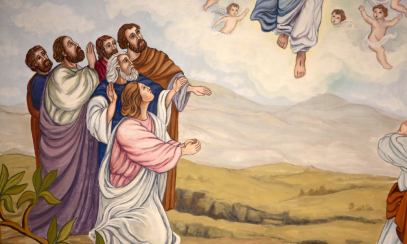What is Mercy?
Let us begin our year-long reflection on the nature of mercy in honor of the official Jubilee Year of Mercy (Dec. 8, 2015 – Nov. 20, 2016) by considering what Pope St. John Paul II wrote in his 1992 apostolic exhortation, Ecclesia in America. Specifically, God is communion and all people are called to share in this same communion.
This magnificent plan of communion for us belongs to the Father and it has a name – the plan of salvation. Salvation comes from the root word salve which means “to heal, to make whole.” To fulfill this plan, Jesus, the heart of this communion, emptied himself to take the form of a human being and accepted death on a cross (cf. Phil 2:7-8) so that we might be brought to life with Christ (cf. Eph 2:5) and share in the divine life of the Triune God. In other words, Christ became the salve for humanity so that all may be one in God.
Today, Christ remains with his Church, the sign and instrument of the communion willed by God. Through the power of the Holy Spirit, who works ceaselessly to create communion and to restore it when it is broken, God’s unwavering will to save is made known to humanity through the ages.
And what does this have to do with a discussion on mercy? The Scripture scholar Fr. John L. McKenzie (1910-1991) would have argued that it has everything to do with mercy as it provides us with the very definition of mercy: “the will to save.”
Wisdom that accompanies mercy
In the First Book of Kings (3:16-28), we find the tale of King Solomon’s famous “custody” case. We are told that there were two harlots who lived in the same house and who gave birth to sons only three days apart from one another. During the night, one of the babies died. The mother of the dead child then switched her baby with the living child as the other mother continued to sleep. Upon waking, the mother of the living child found herself with a dead child, but she realized he was not hers. However, there were no witnesses as the two women were alone in the house.
As they later stood before King Solomon, both claimed the living child. With no way of determining whose child was whose, King Solomon ordered that justice required the living child be divided into two equal parts, one for each of the women.
Upon hearing the king’s judgment pronounced, the woman who was truly the mother of the living child pleaded with the king to give the child to other woman. In response, the other woman said to go ahead and divide the child so as to deny both women a living child. Of course, we know King Solomon saw through to the truth of the matter and changed his ruling to give the living child to his rightful mother.
On her part, the mother was willing to forego her parental right out of love and mercy for her child.
A saint elaborates on mercy
In his 1980 encyclical, Dives in Misericordia, Pope St. John Paul II wrote that the mercy of Christ reveals the love of the Father is more primary and fundamental than the Father’s justice. Mercy “signifies a special power of love, which prevails over the sin and infidelity” of the world. In fact, “love is transformed into mercy when it is necessary to go beyond the precise norm of justice – precise and often too narrow.” This is because mercy, or love transformed, alone is “able to justify [humanity], to restore justice in the sense of that salvific order which God willed from the beginning.” This does not mean that justice is forgotten. In overcoming sin, love transformed into mercy restores right relationships, or justice, by restoring the dignity and value of the offending party. Mercy actually calls the sinner to conversion, the most concrete expression of the presence of mercy. Consider Luke 7:36-50. While Jesus is dining at the house of a Pharisee, a sinful woman stands behind him bathing his feet with her tears and anointing them with oil. When the Pharisee objects, Jesus replies, “Her many sins have been forgiven; hence, she has shown great love. But the one to whom little is forgiven, loves little.” In short, as Pope St. John Paul II so eloquently put it, “Believing in the crucified Son means ‘seeing the Father,’ means believing that love is present in the world and that this love is more powerful than any kind of evil in which individuals, humanity, or the world are involved. Believing in this love means believing in mercy.” And true mercy is the most profound source of that justice which amounts to our living in right relationship with God – to living in the communion that is our salvation.



